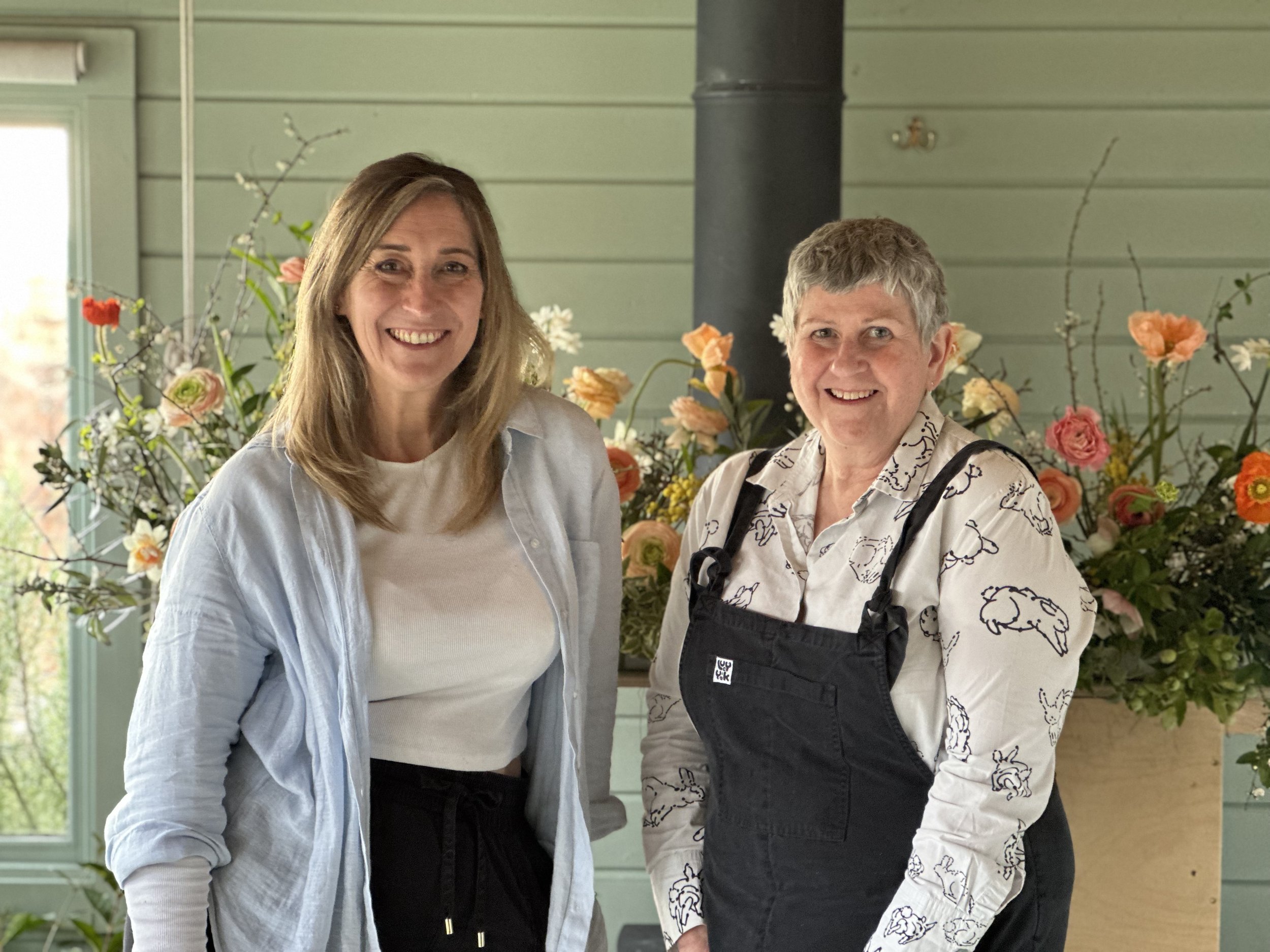Sustainability in Floristry
Why It Matters and How to Make a Change for the Future
Sustainability – why does it matter?
Floristry is a beautiful and creative industry, bringing joy to people through stunning floral arrangements for weddings, funerals, and everyday occasions. However, behind the beauty lies an environmental impact that cannot be ignored. Traditional floristry relies heavily on single-use plastics, floral foam, and chemically treated flowers, all of which contribute to pollution, carbon emissions, and waste. As the world becomes more environmentally conscious, sustainable floristry is emerging as both a necessity and an opportunity to work harmoniously with nature.
Single-Use Plastics in Floristry
Plastics are widely used in floristry, from cellophane wrapping and plastic ribbons to water tubes and plastic trays. These materials, while convenient, often end up in landfills or oceans, taking hundreds of years to break down.
Environmental Impact
Non-biodegradable: Most plastic materials used in floristry do not decompose naturally, leading to long-term pollution.
Microplastics: Over time, plastics break down into smaller particles, polluting soil and water systems, harming wildlife, and even entering human food chains.
Carbon footprint: The production and disposal of plastics contribute significantly to greenhouse gas emissions.
Sustainable Alternatives
Biodegradable wraps: Materials like paper, compostable cellophane, and fabric wraps offer eco-friendly alternatives.
Reusable materials: Encouraging customers to return vases, baskets, or other hard materials can help reduce waste.
Natural twine and raffia: Instead of plastic ribbons, using materials like jute twine and raffia provides a biodegradable and rustic alternative.
The Hidden Dangers of Floral Foam
One of the most problematic elements in traditional floristry is floral foam, a green, sponge-like material commonly used to secure flower arrangements. Despite its convenience, floral foam is made from phenol-formaldehyde, a petroleum-based plastic that contains carcinogenic chemicals.
Environmental and Health Concerns
Microplastic pollution: When floral foam is broken apart or washed away, it releases microplastics into water systems, harming aquatic life.
Toxicity: Floral foam contains harmful chemicals that can pose health risks to florists and consumers who handle it frequently.
Non-biodegradable: It does not decompose, contributing to landfill waste.
Sustainable Alternatives
Chicken wire and moss: These natural materials provide excellent structural support for arrangements and are reusable or biodegradable.
Frogs and pin holders: Used in traditional Japanese ikebana floristry, these metal or ceramic tools can be reused indefinitely.
Sand, stones, and clay: Natural substances can be used to anchor stems while maintaining moisture.
Water sources: Arrangements can be placed in vases filled with water instead of relying on foam for hydration.
Ethical Sourcing of Flowers
Sustainability in floristry goes beyond materials—it also includes how and where flowers are sourced. The global flower industry has a significant environmental footprint due to energy-intensive production, extensive pesticide use, and long transportation distances.
Issues with Conventional Flower Sourcing
High carbon footprint: Many flowers are imported from countries like Kenya, Colombia, and Ecuador, requiring extensive air travel.
Chemical treatments: Flowers are often sprayed with pesticides and preservatives, which can harm pollinators, soil health, and human handlers.
Labor concerns: Some large-scale flower farms have been criticized for poor working conditions and low wages.
Sustainable Alternatives
Locally grown flowers: Supporting local flower farmers reduces transportation emissions and supports the local economy.
Organic and chemical-free options: Choosing flowers grown without harmful pesticides helps protect the environment and health.
Seasonal flowers: Arranging flowers based on the seasons promotes biodiversity and reduces reliance on imported blooms.
Repurposing and drying flowers: Using dried flowers or repurposing flowers from one event to another reduces waste.
Waste Reduction in Floristry
Waste is a significant issue in floristry, from leftover flower stems to excess packaging. Reducing waste not only helps the environment but can also save costs for florists.
Ways to Reduce Waste
Composting: Organic waste, such as leaves, stems, and spent flowers, can be composted rather than thrown away.
Reusing materials: Glass vases, ribbons, and wire can be reused multiple times.
Minimalist designs: Simplified arrangements use fewer materials while maintaining beauty and impact.
Customer education: Encouraging customers to return or repurpose flowers extends their lifespan.
Small changes can make a big impact…
Eco-Friendly Business Operations
Reducing energy consumption: Using energy-efficient lighting and refrigeration can lower carbon footprints.
Sustainable packaging: Opting for recycled paper, compostable stickers, and natural wrapping materials enhances sustainability.
Delivery efficiency: Grouping deliveries or offering bike deliveries in urban areas can cut down emissions.
Spreading Awareness
Educating clients: Offering information on sustainable choices can influence customer preferences.
Workshops and events: Hosting events to teach sustainable floral techniques can inspire other florists and hobbyists.
Certifications: Seeking eco-friendly certifications can enhance credibility and attract environmentally conscious customers.
The Future of Sustainable Floristry
Sustainability in floristry is not just a trend but a movement towards more ethical and environmentally responsible practices. The industry is slowly shifting as more florists and customers become aware of their impact. Innovations such as biodegradable floral foam alternatives, carbon-neutral flower farms, and digital floral design tools are paving the way for a greener future.
By embracing sustainable materials, ethical sourcing, and waste reduction strategies, florists can continue to create breathtaking floral arrangements without compromising the health of the planet. Consumers, too, play a role by choosing eco-conscious florists, asking about sourcing, and opting for sustainable floral designs.
Sustainable floristry is an urgent necessity in today’s world. The overuse of single-use plastics, floral foam, and imported flowers has contributed to environmental damage that can no longer be ignored. Fortunately, with the rise of eco-conscious floristry, there are many viable alternatives that allow florists to continue their artistry while reducing their environmental footprint.
As florists, business owners, and consumers, we all have the power to make a difference.
Choosing sustainable materials, reducing waste, and supporting ethical flower farms can help protect the environment while still celebrating the beauty of flowers. Sustainability in floristry is not just about reducing harm—it’s about creating a flourishing future for both people and the planet.







